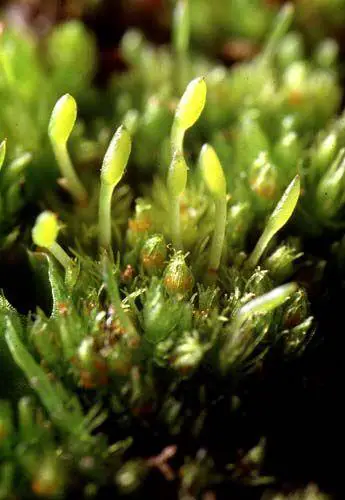
e64dbd5659b340878cb2da09997cf57a.jpg from: https://www.pinterest.com/pin/394416879847112996/
Takakia ceratophylla: The Enigmatic Moss of Ancient Lineage
Introduction
In the fascinating world of bryophytes, Takakia ceratophylla (Mitt.) Grolle stands out as a truly remarkable moss species. Belonging to the Takakiaceae family, this ancient lineage has captured the attention of botanists and enthusiasts alike. In this blog post, we’ll delve into the intriguing world of Takakia, exploring its unique morphology, global distribution, ecological roles, and the mysteries that surround this living fossil.
Background
Takakia ceratophylla is a moss species that belongs to the Takakiopsida class, a group of ancient mosses that diverged early in the evolution of land plants. The Takakiaceae family consists of only two known species: T. ceratophylla and T. lepidozioides. These mosses are considered relicts of an ancient lineage, with their origins dating back to the Mesozoic era.
Morphology and Identification
One of the most striking features of Takakia ceratophylla
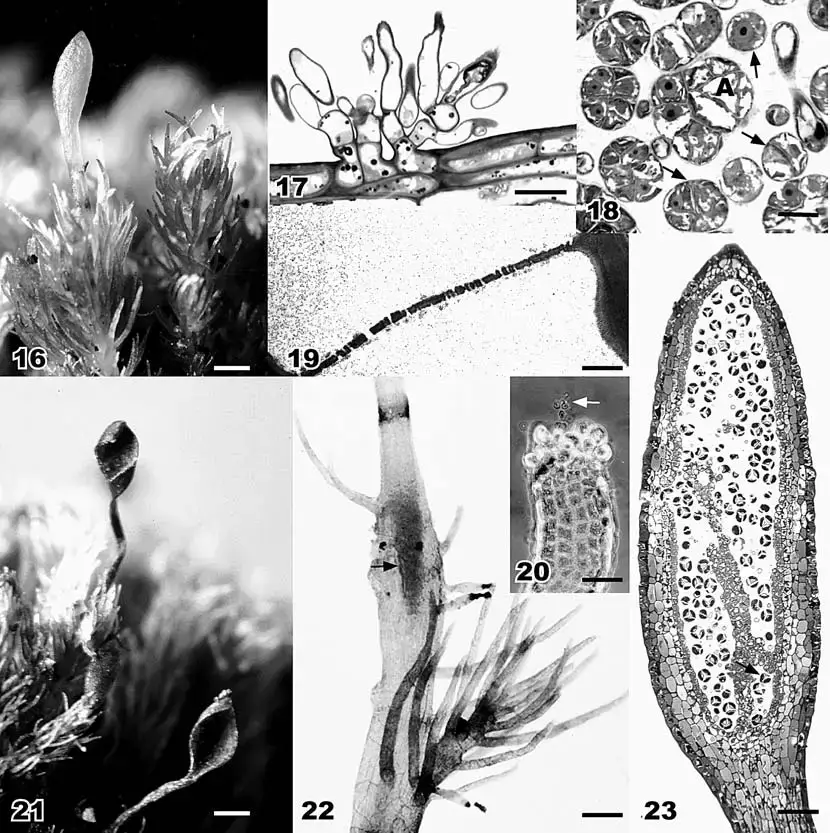
Figures-16-23-Takakia-ceratophylla-16-Habit-showing-female-gametophyte-with-attached.png from: https://www.researchgate.net/figure/Figures-16-23-Takakia-ceratophylla-16-Habit-showing-female-gametophyte-with-attached_fig4_232694622
is its unique morphology. Unlike most mosses, which have leaves arranged in a spiral or alternate pattern, Takakia possesses leaves that are deeply divided into narrow, horn-like segments. These segments give the moss a distinctive appearance, resembling tiny antlers. The stems are slender and sparsely branched, typically growing in dense mats or cushions.
Identification of Takakia ceratophylla requires careful examination of its microscopic features. The leaves lack a midrib and are composed of a single layer of cells. The leaf margins are entire, and the leaf tips are acute. Sporophytes are rarely produced, but when present, they are small and inconspicuous, lacking a seta and a distinct capsule.
Global Distribution and Habitat
Takakia ceratophylla has a scattered global distribution, with populations found in
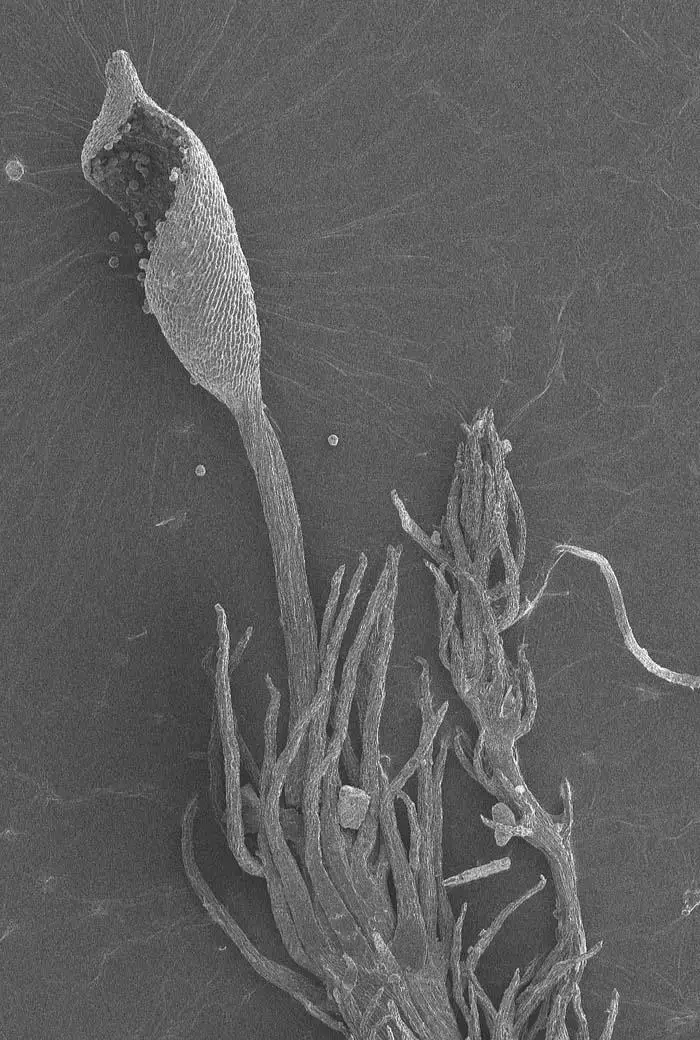
takakia_sporophyte_700.jpg from: https://blogs.ubc.ca/biology321/?page_id=2675
North America, Europe, and Asia. It is considered a rare species, with a limited range and specific habitat requirements. This moss typically grows on damp, shaded rocks or cliffs, often in mountainous regions or cool, humid forests.
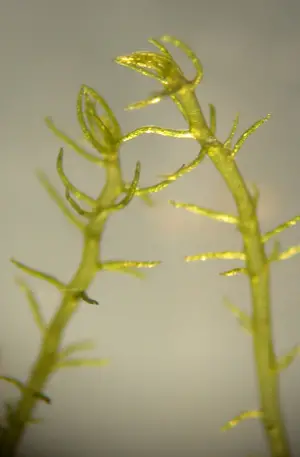
overall-structure.png from: https://blogs.ubc.ca/biology321/?page_id=50
One of the most notable habitats for Takakia is the Pacific Northwest region of North America, where it thrives in the temperate rainforests of Alaska, British Columbia, and Washington State. In these areas, the moss forms lush, green carpets on rock surfaces, contributing to the enchanting beauty of the forest understory.
Ecological Roles and Adaptations
Despite its small size, Takakia ceratophylla plays significant ecological roles in its native habitats. As a pioneer species, it helps colonize bare rock surfaces, paving the way for the establishment of other plant communities. The dense mats formed by Takakia help retain moisture, prevent soil erosion, and provide shelter for various microorganisms and invertebrates.
Takakia‘s unique adaptations enable it to thrive in its specific niche. The deeply divided leaf segments increase the surface area for water and nutrient absorption, while the compact growth form helps conserve moisture in dry periods. The moss’s ability to tolerate low light levels allows it to grow in shaded environments, such as beneath forest canopies or in deep crevices.
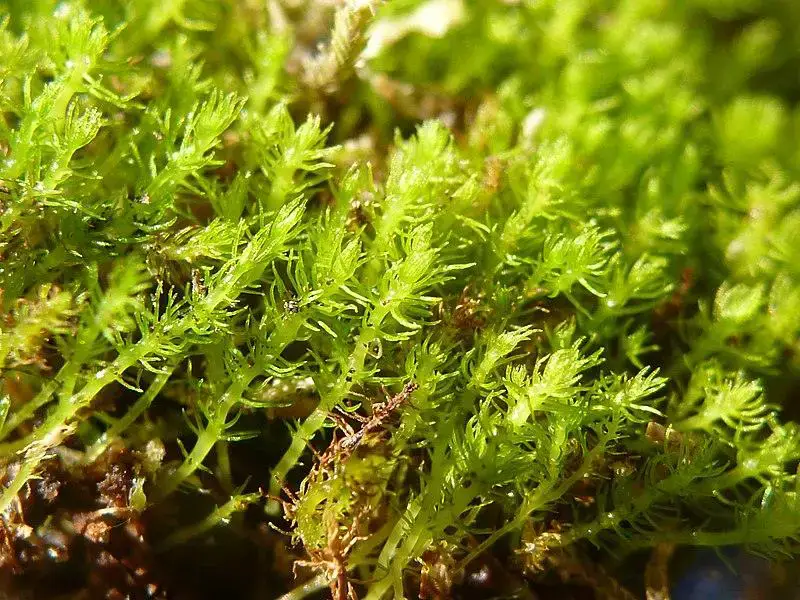
oldest-moss-takakia-in-himalayas-growing-for-390-million-years-risks-extinction-to-climate-breakdown.jpg from: https://www.trendradars.com/article-4898153-oldest-moss-takakia-in-himalayas-growing-for-390-million-years-risks-extinction-to-climate-breakdown
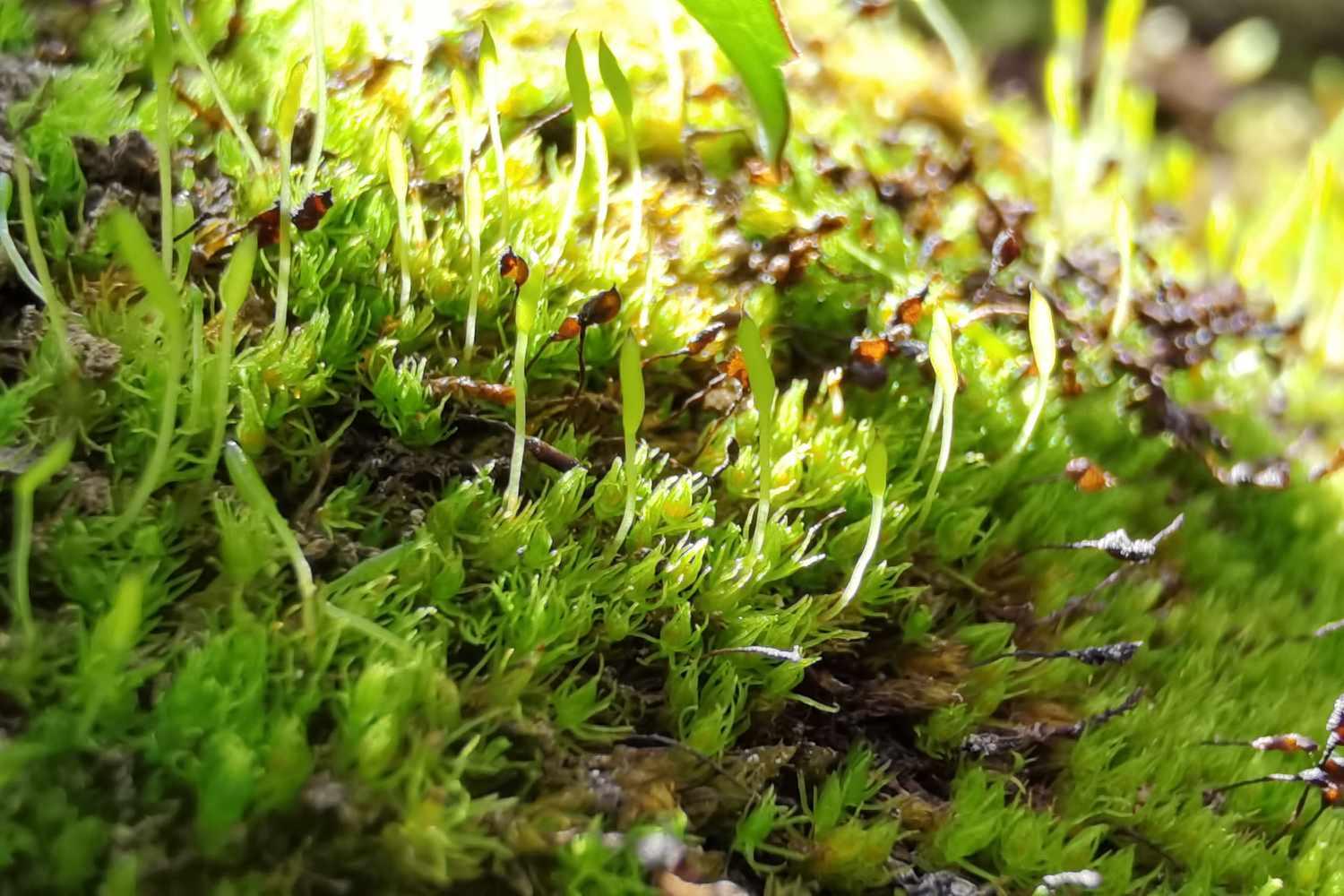
PM_Biologie_Takakia_Reski_Takakiapopulation_-e25476df37f44709977b8b09a594870b.jpg from: https://www.treehugger.com/worlds-oldest-moss-may-not-survive-humans-7574526
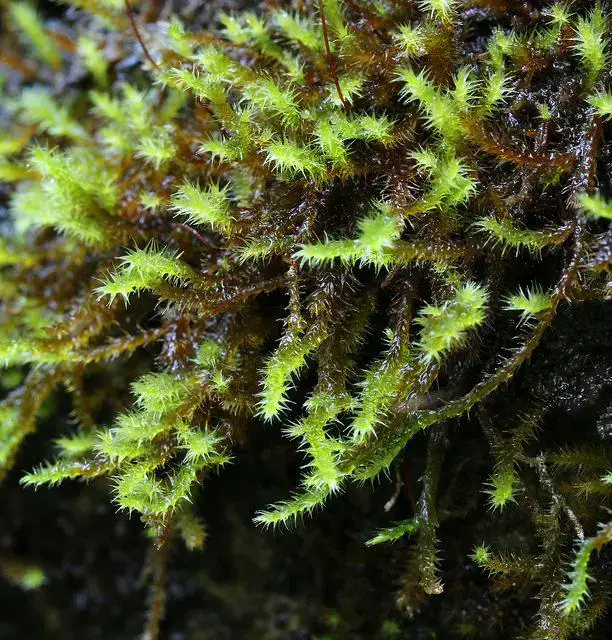
jim_stasz_jim__stasz_19701426268_641ed16b6c_z.jpg from: https://www.marylandbiodiversity.com/view/10685
| Characteristic | Description |
|---|---|
| Class | Takakiopsida |
| Family | Takakiaceae |
Genus
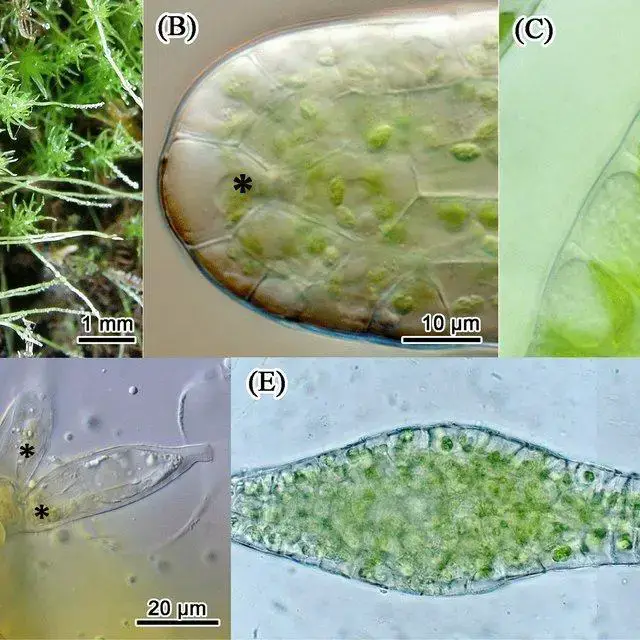 Takakia-lepidozioides-and-monoplastidic-condition-observed-in-various-tissue-A-Plant_Q640.jpg from: https://www.researchgate.net/publication/356509583_The_complete_plastid_genome_sequence_of_the_enigmatic_moss_Takakia_lepidozioides_Takakiopsida_Bryophyta_evolutionary_perspectives_on_the_largest_collection_of_genes_in_mosses_and_the_intensive_RNA_edi |
Takakia |
| Species | T. ceratophylla, T. lepidozioides |
| Leaf Morphology | Deeply divided into narrow segments |
| Stem | Slender, sparsely branched |
| Habitat | Damp, shaded rocks or cliffs |
Distribution
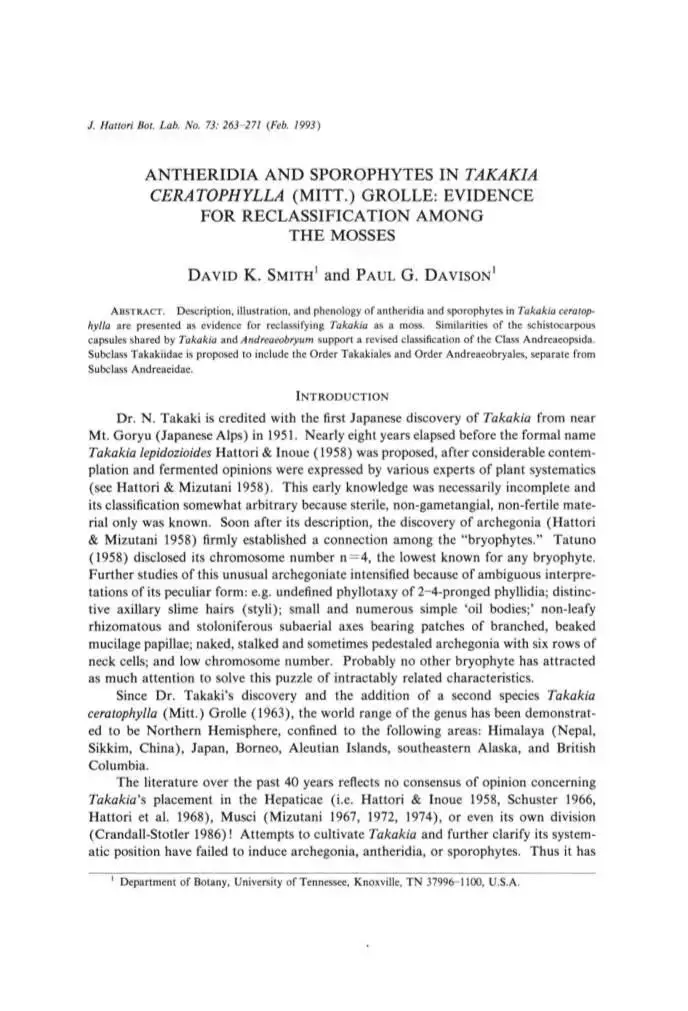 antheridia-and-sporophytes-in-takakia-ceratophylla-mitt-grolle-evidence-for-reclassification-among-the-mosses.jpg from: https://docslib.org/doc/4857752/antheridia-and-sporophytes-in-takakia-ceratophylla-mitt-grolle-evidence-for-reclassification-among-the-mosses |
North America, Europe, Asia |
Conclusion
Takakia ceratophylla is a true gem in the world of mosses, captivating us with its ancient lineage, unique morphology, and ecological significance. As we continue to study and appreciate this remarkable species, we are reminded of the incredible diversity and resilience of life on Earth. The next time you find yourself in a cool, misty forest, keep an eye out for the delicate, antler-like leaves of
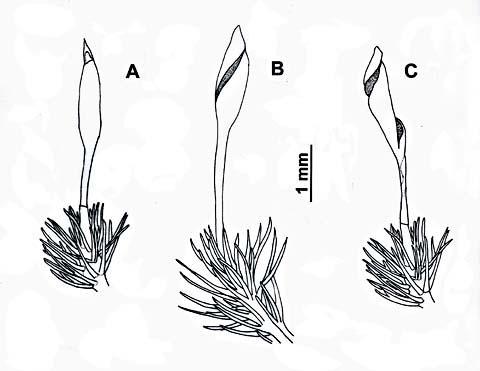
takak5.jpg from: https://www.nrm.se/faktaomnaturenochrymden/vaxter/kryptogamer/manadenskryptogam/mossor/takakiaenmarkvardigmossa/takakiaceratophylla.2098.html
Takakia, and marvel at the secrets this ancient moss holds. Who knows what other mysteries await discovery in the realm of bryophytes?